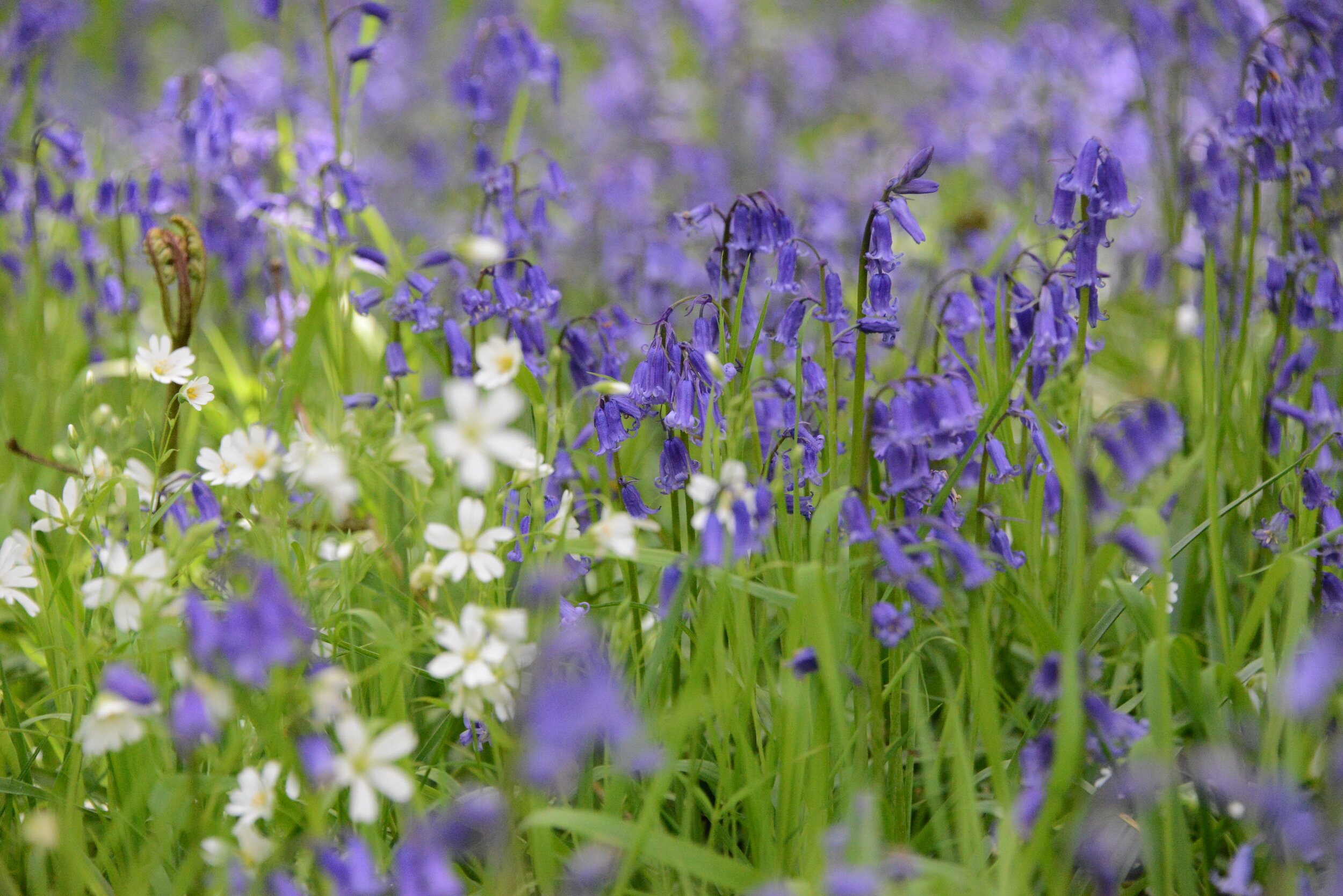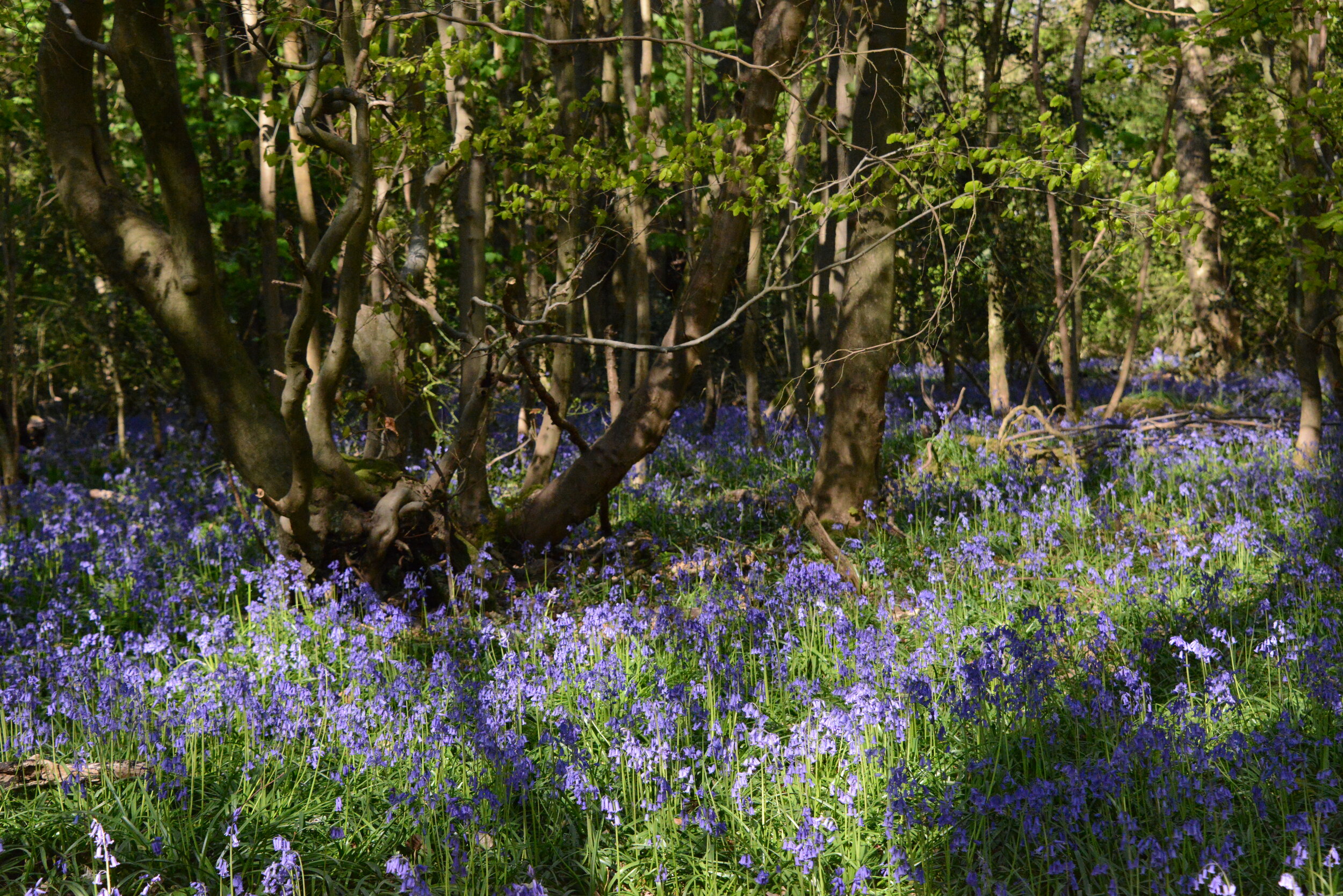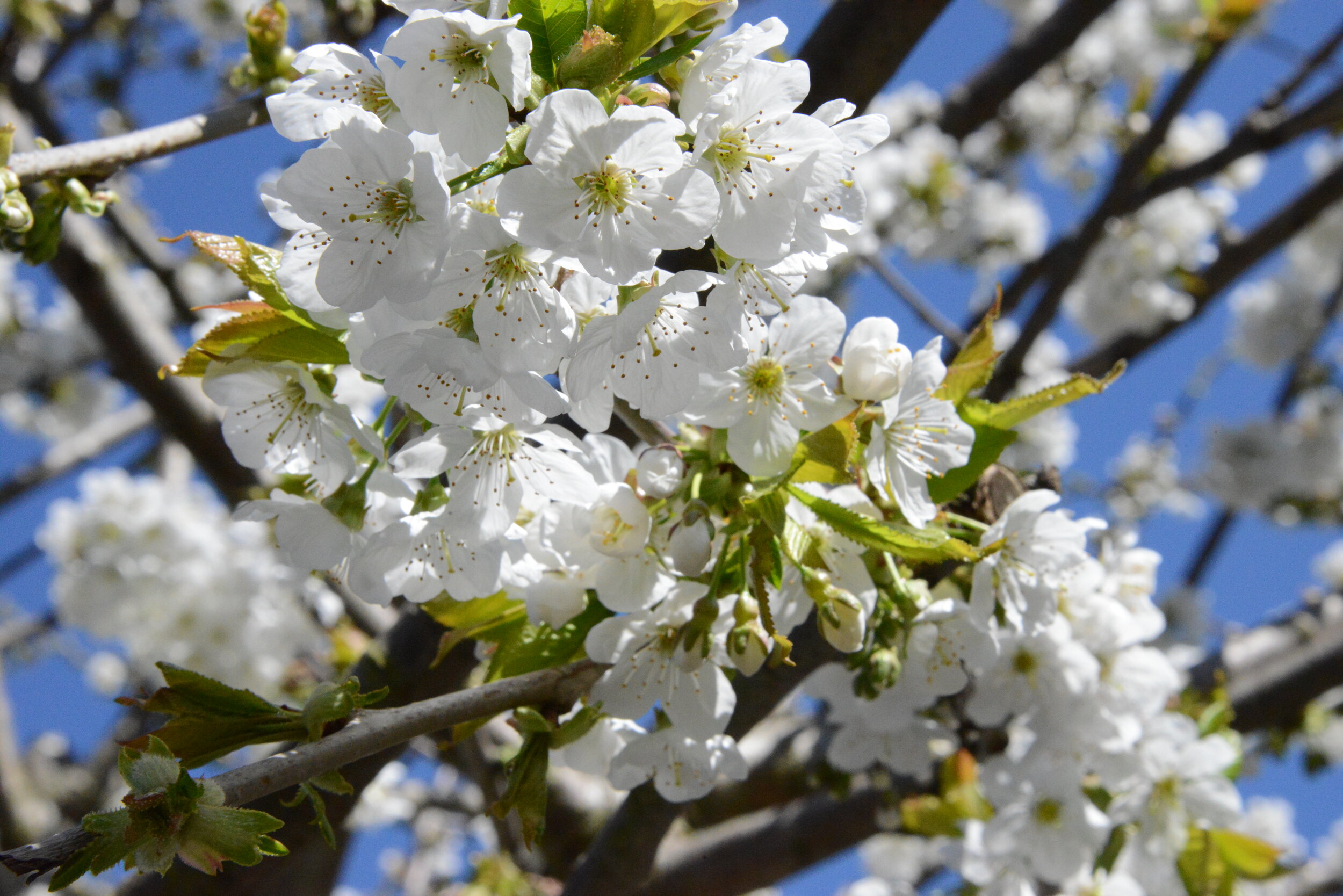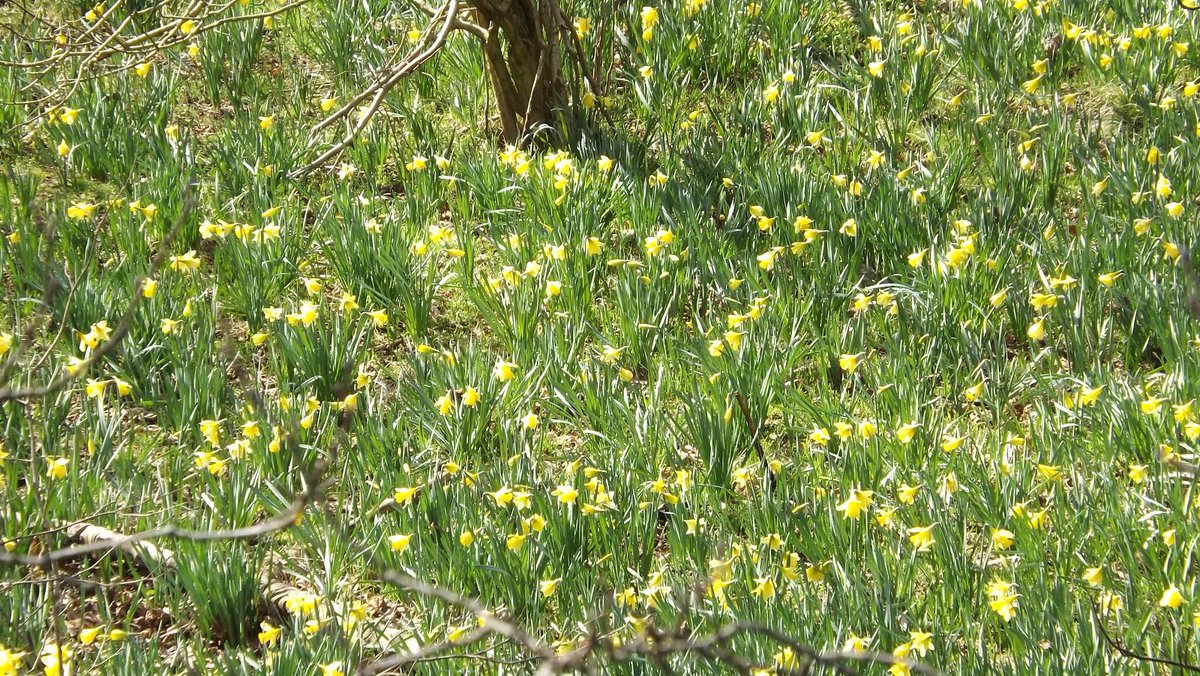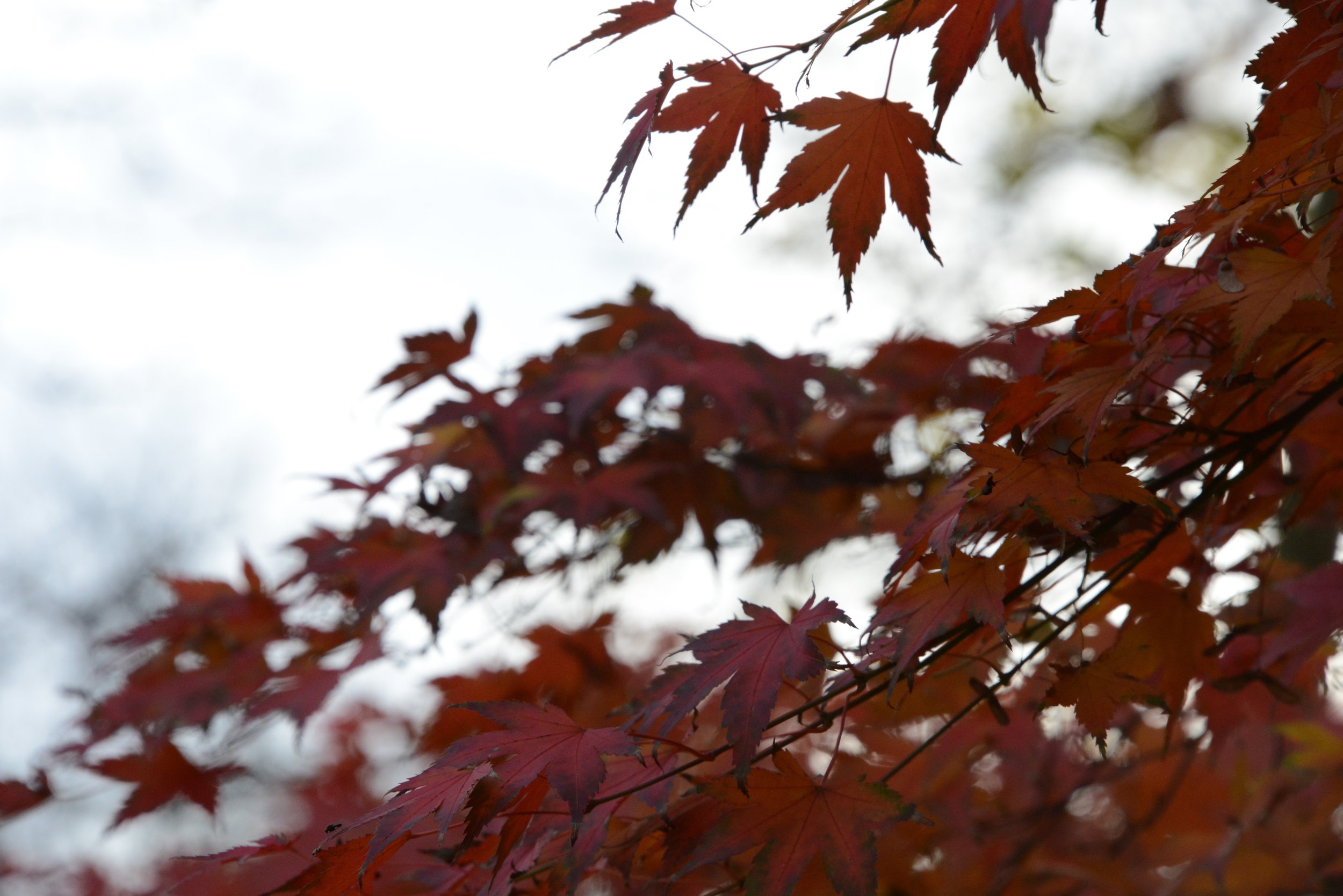Birdsong, dappled shade, emerging leaves, the play of light on the woodland floor, a sweet, illusive scent and low to the ground a mist of violet blue; the wild hyacinth, wood bell, cuckoo’s boots, ladies nightcap, witches thimbles, granfer griggles, crow’s toes, the bluebell.
Bluebells with greater stitchwort
Bluebell flowers emerge from long, narrow, green leaves. The succulent stems flowing from pale green to dark violet, curve to form an arch, carrying an inflorescence of up to twenty pendulous flowers. Each bell shaped flower, curls at the tips, the colour shimmering between indigo at the stem to violet blue and then to lilac as the tips curl. Bluebells can grow in such masses they create rippling waves of iridescent blues where shafts of broken sunlight penetrate the spring canopy.
Bluebells with pollinator
Bluebells are an indicator plant of ancient woodlands, they have colonised our deciduous woods since the last ice age. They thrive on moist, free draining soils and need some shade, though undisturbed habitat is as important for their survival and growth. Wild garlic, thrives in similar conditions and where it is wetter will out compete bluebells completely. Colonies take five to seven years from seed to flower. They also spread on contractile roots that can grow as far as 250mm beneath the soil’s surface. The strappy leaves emerge early in March and the plant then races to flower before the tree canopy becomes too dense and severely limits levels of light. Flowers appear from April to May depending on the location, their distinctive scent attracts pollinators and they provide nectar for woodland butterflies, bees and hoverflies. Two months after flowering the small, round, pointed, black, seed is shed. It needs a warm, moist period followed by cold in order to germinate and complete its cycle.
Bluebells in a Kentish woodland
The plants contain 15 biologically active, poisonous compounds, a defense against both mammals and insect pests. The sticky sap was used to glue feathers onto the arrows of medieval archers, and in bookbinding. The Elizabethans used starch from the bulbs to stiffen their ruffs and collars. The flowers symbolise luck, both good and bad. Bluebell woods were believed to be enchanted places where fairies trapped humans to wander forever, drawn by the sweet scent and the shimmering blues.
Bluebell wood in Somerset with greater stitchwort and yellow archangel
Bluebells are now threatened by habitat destruction, hybridisation and the illegal trade in wild bulbs. Colonies are weakened by trampling and damaged by uprooting. The hybridisation risk comes from the Spanish bluebell, a garden escapee. These are washed a paler blue, with a sturdy, upright stem surrounded by more closely held flowers. In contrast the native bluebell looks more delicate, curving and intense in colour.
Native bluebell left, Spanish bluebell right
The charm of bluebell woods remain, a transient moment of beauty. They form a link between spring and summer, between unfurling leaf and dense canopy, a fragrant, fleeting blue covering the woodland floor.
Bluebell woods East Sussex

